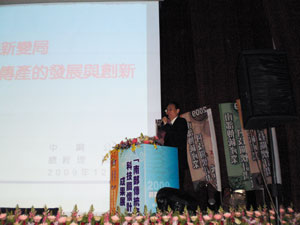STARS Project Adds Spark to Taiwan's Traditional Industries
2010/03/03 | By Steve ChuangThe Department of Industrial Technology (DIT) under the Ministry of Economic Affairs initiated the Southern Taiwan Alliance of Researchers & Scholars (STARS) Project in 2007 to bolster the development of traditional industries in seven counties and cities of southern Taiwan, and to guide their transition from original equipment manufacturing (OEM) to original design manufacturing (ODM). The seven: Chiayi County and City, Tainan County and City, Kaohsiung County and City, and Pingtung County.
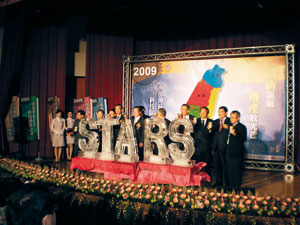
Lack of R&D Momentum
At present, southern Taiwan has around 17,000 small and medium enterprises (SMEs) in traditional manufacturing industries, with over 560,000 employees and total revenues of NT$4.7 trillion (US$146.68 billion at NT$32:US$1) a year. These SMEs have propped up Taiwan's export-dependent economy over the past five decades, said H.C. Fu, vice president of the MIRDC (Metal Industries Research & Development Centre), a non-profit institute located in Kaohsiung City.
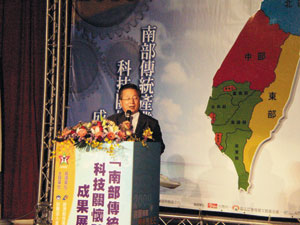
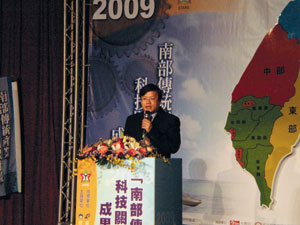
However, Fu went on, SMEs are comparatively unwilling to devote resources to R&D work. According to a survey conducted by the National Science Council, SMEs accounted for only 16% of Taiwan's total R&D spending in 2006; this spending grew at a compound annual rate of 2.6% from 2001 to 2006, far less than an 11.5% growth in spending by large enterprises during the same period. The R&D inertia is especially strong in traditional industries; SMEs in traditional manufacturing contributed only 18.8% of overall R&D spending by manufacturing industries in 2006, compared with the 81.2% contribution of high-tech firms.
One reason why Taiwan's manufacturers in traditional industries spend comparatively little on R&D is that they have limited financial resources. Another, Fu explained, is that Taiwan has few big-brand manufacturers that can stimulate the demand for innovation in the downstream production, and few upstream suppliers of raw materials that play a role in fueling R&D for the upgrading of production.
Confluence of Resources
In a view of the fact that most SMEs in traditional industries are plagued by limited resources and an outflow of talent, DIT officials aim for their three-year project to help SMEs gain easy access to the combined financial and R&D resources of the government; R&D institutions such as the MIRDC, Chung Shan Institute of Science and Technology, and United Ship Design & Development Center; and local colleges and universities including National Cheng Kung University, National Kaohsiung University of Applied Sciences, Kao Yuan University, National Pingtung University of Science and Technology, and National Kaohisung First University of Science and Technology.
More specifically, the project aims to create a so-called “Top-Down + Bottom-Up” cooperation model in which institutions help stimulate the formation of R&D alliances and offer problem solving for the development of new materials and key manufacturing technologies in southern Taiwanese industries, while local academic organizations assist industries in deepening their labor pool and providing customized R&D solutions to enrich their experiences in custom manufacturing while sharpening their competitive edge in ODM operations. In other words, the dual-tract cooperation model is designed to transform regional clusters of manufacturers into sources of innovation and invention.
Presentation of Achievements
After three years of progress, the project has brought about the formation of 12 small business innovation research (SBIR) and 32 R&D alliances among institutions, schools, and manufacturers in different traditional sectors such as fasteners, yachts, watercraft equipment and hardware, hand tools, locks, auto and engine parts, medical devices, industrial valves, watches, leather products, helmets, molds, food packaging, and lighting. Forty-three innovative products and value-added technologies were developed, all of which were introduced at an Achievement Presentation of the STARS Project, which was organized by the MIRDC on Dec. 7-10, 2009, in Kaohsiung
“The implementation of the project has been innovative,” says MIRDC Chairman Huang Chi-Chuan, “because we have created an institution-enterprise platform to provide problem-solving assessments and facilitate the formation of SBIR and R&D alliances and, at the same time, an enterprise-academia platform to reinforce cooperation between professors and corporate managers. In the future, the MIRDC will continue integrating governmental, institutional, and academic resources for the development and upgrading of traditional industries.”
Y.M. Wang, a senior specialist at DIT, noted that over 4,000 university professors, researchers, and enterprises have joined the project, and that more than 1,000 SMEs have benefited from the three-sided cooperation over the past three years. “The success of the project,” he explained, “is due partly to active participation by the China Steel Corp. (the largest steelmaker in Taiwan) and colleges and universities, and partly to the existence of solid regional manufacturing clusters.”
With the ASEAN+3 (China, Japan and South Korea) FTA to come into effect and ECFA (the Economic Cooperation Framework Agreement) between China and Taiwan to be signed this year, Lo Shih-hsiung, CEO of the Executive Yuan's Southern Branch, stressed that the STAR Project has created synergies and reinforced the international competitiveness of manufacturers in Taiwan's traditional sectors, adding that “The government will keep providing such support to help Taiwanese SMEs.”
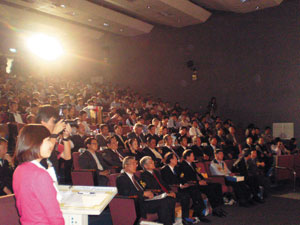
Living Proof
Living proof of the benefits of the STAR Project is provided by the achievements of the Heat Treatment R&D Alliance, consisting of STAR members Ying Ming Industry Co., Chun Yu Works & Co., Anchor Fasteners Industrial Co., and Jau Yeou Industry Co. in the development of aerospace fasteners.
The four companies, which are among Taiwan's most seasoned fastener makers, specialize in the production of different kinds of fasteners and had total revenues exceeding NT$9 billion in 2008—about 8% of the total revenues of Taiwan's fastener industry. The four firms have long been regarded as top-notch manufacturers in their respective segments, but the enormous technical and financial resources required to develop a certificated production line for aerospace fasteners were out of range for any one of the four alone.
It was the STARS Project that brought the four together. Ying Ming, backed by the MIRDC and with funding from the DIT, put the alliance together and coordinated the resources of the other three members for the joint exploration of the uncharted territory of aerospace fasteners.
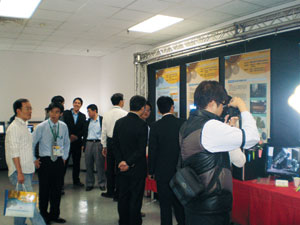
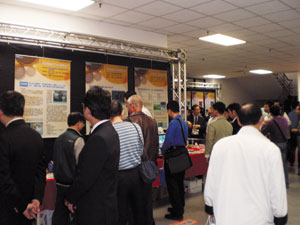
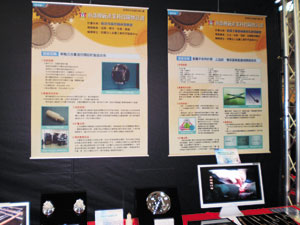
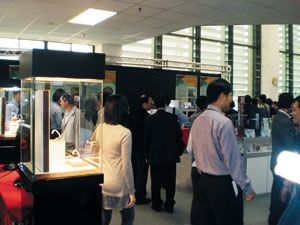
According to the MIRDC, to become part of the aerospace fastener supply chain the companies have to be certificated for manufacturing capability, heat and chemical treatment, and nondestructive materials testing by NADSCAP (the National Aerospace and Defense Contractors Accreditation Program), a global standards-setting program for aerospace engineering.
Ying Ming, which is experienced in the production of auto fasteners and has TS16949 and QMI ISO-9001: 2000+AS9100B certification, was good at manufacturing and nondestructive and materials testing, but lacked sufficient know-how about heat and chemical treatment. So, technically supported by the MIRDC and receiving instruction from Reinhold Kocciorski, an expert in NADCAP certification, the company made rapid progress in heat and chemical treatment and was able to build an aerospace fasteners production line that meets NADCAP requirements.
The alliance members have now succeeded in developing the production of NAS1802-4-8 and NAS 6704-9 aerospace fasteners made of A286 alloy steel, and NADCAP certification is expected in 2011. This achievement, the MIRDC believes, will do much to enhance the production value of Taiwan's fastener industry in the future.



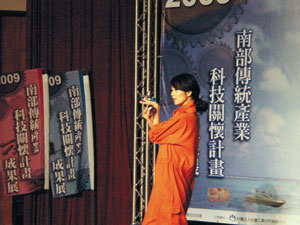
Support from Other Institutions
Other research institutions besides the MIRDC have also devoted their efforts to helping Taiwan's traditional industries build a more promising future.
For example, last year the United Ship Design & Development Center (USDDC) helped four of Taiwan's leading watercraft equipment makers to form an R&D alliance for the development of steering engine production. The alliance leader, Funz San Industry Co., founded in 1988 in Kaohsiung County (where Taiwanese watercraft equipment makers are concentrated), is a world-caliber deck machinery and fishing machine supplier whose products have been certificated by CR (the China Corporation Register of Shipping), ABS (American Bureau of Shipping), BV (Bureau Veritas), DNV (Det Norske Veritas), and GL (Germanischer Lloyd).
All of the steering engines currently used by Taiwanese shipbuilders are imported. Citing the island's output of 330 boats and vessels in 2008, the USDDC noted that there is great potential, worth billions of NT dollars a year, for domestic steering-engine production. To take advantage of that potential, Funz San has joined forces with the USDDC and three other Taiwanese manufacturers for the development of production technology for steering engines that must gain international certification. The USDDC reports that the development work is 70% completed and, if all goes will, will boost the growth of Taiwan's marine equipment, parts, and maintenance industry.
The Plastic Industry Development Center (PIDC) has also brought about the formation of an R&D alliance, teaming up with Poly-Mong Plastic Industry Co. and three other plastic tube extrusion companies for the optical analysis, design, and development of plastic LED lamp tubes and lenses.
The PIDC noted that companies in the plastic extrusion industry are unable to break into the lamp tube and lens supply chains used by Taiwanese LED lighting makers because of their lack of technical support and financial resources. With help from the PIDC, however, the alliance members have been absorbing state-of-the-art technologies for the design and production of tubes and lenses for LED lamps and are well on their way to achieving the capability they need to develop this niche market.
In addition to the development of value-added products, the PIDC added, the alliance also aims to pave the way for the integration of the plastic extrusion industry with the LED lightings industry. With LEDs poised to replace fluorescent lamps as the mainstream lighting source in the future, alliance members are optimistic that their current dedication to LED lighting fixtures and components will soon pay off.
Seminars and Speeches
Together with National Kaohsiung Normal University, the MIDC organized four conferences on design trends in the metal furniture industry on the first day of the presentation, with experts and professors, including Red Dot CEO Peter Zec (who also delivered a topic “Design Value – A New Strategy for Business Success”), as discussants. On the following days, seminars about locks, LED lighting, and the development of traditional industries in southern Taiwan also attracted the participation of large numbers of industry insiders.
The major booster of Taiwan's metal and metallic product industries, and one of the top movers of the STARS Project, the state-owned China Steel also sent its president, Y.C. Chen, to give a talk on development and innovation in traditional industries. Taking the steelmaking industry as an example, Chen noted that his company just won the 17th Industrial Technology Advancement Award for its devotion to innovation, affirming that no traditional industry is out of date so long as it sticks to innovation.
In addition, Chen said, his company has also helped with the formation of nine alliances, with participation by 47 companies and seven R&D institutions in addition to colleges joining, as part of its effort to help traditional industries engage in innovation. For instance, he added, China Steel has joined with fastener makers in the development and production of fasteners for wind-generation equipment, with hand tool makers in high-end ratchet wrenches, with the Tatung Co. in 2250KW industrial motors, and with the Rechi Precision Co. in DC compressors.
After witnessing success of the STARS Project in helping traditional industries in southern Taiwan, DIT officials said that beginning this year they plan to duplicate this success in other regions in the hope of achieving overall industrial upgrading in Taiwan.
